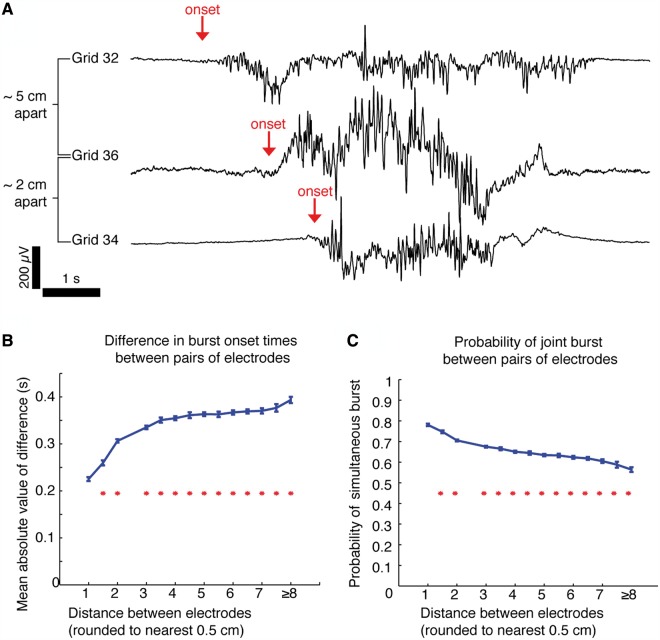Figure 3.
Burst timing is heterogeneous across cortex. (A) Example trace from Patient C: the burst in channel 32 starts hundreds of milliseconds before the bursts in channels 36 and 34. (B) Plot of mean difference in burst onset times between electrodes shows that there are substantial timing differences in burst onsets between distant electrodes, with distant electrodes showing larger gaps in burst timing. Blue lines are mean and standard error, red stars mark distances that are significantly different than pairs 1 cm apart (n = 233 electrodes in four patients). (C) Probability that two electrodes are both bursting (total time where both electrodes burst, normalized by total time that either electrode has a burst.) Probability decreases with distance, demonstrating that distant electrodes are less likely to be simultaneously in a burst state.

